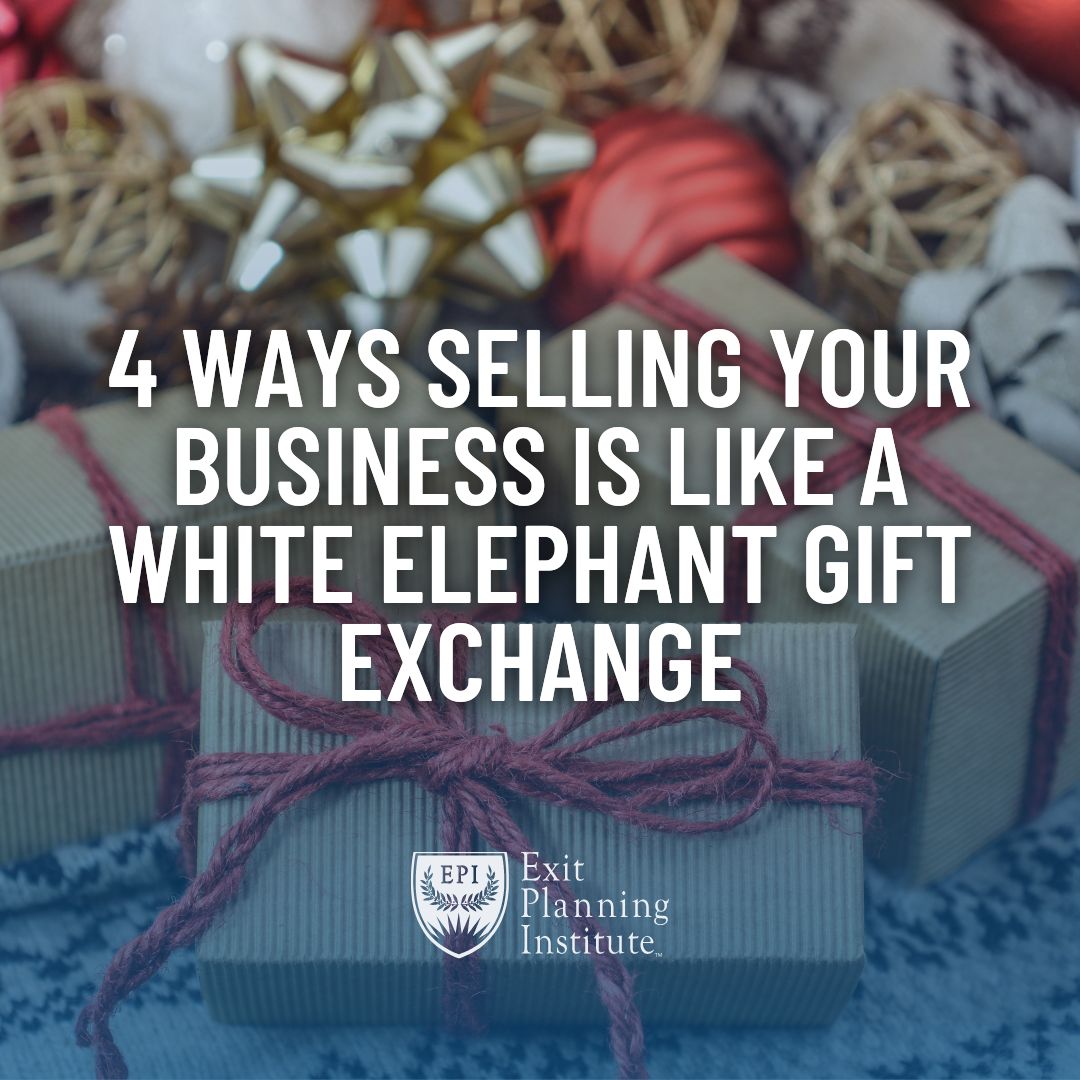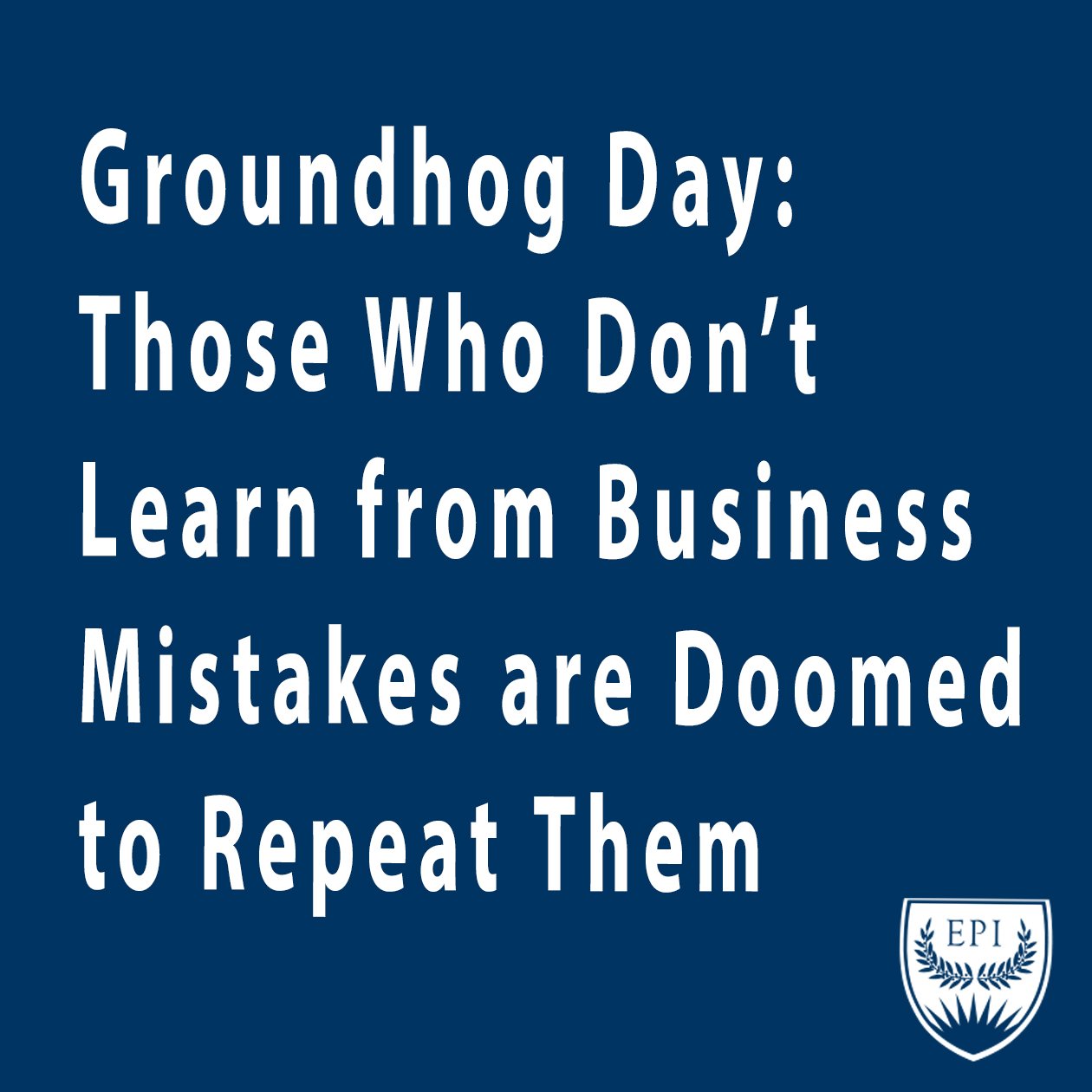
THE EXIT PLANNING BLOG
Keep up-to-date with exit planning, succession planning, industry trends, unique specialty insights, and useful content for professional advisors and business owners.
Share this
4 Ways Selling Your Business is Like a White Elephant Gift Exchange
by Colleen Kowalski on December 6, 2022

December brings the beginning of the winter holiday season and the numerous holiday parties that come with it. As you spend the season attending party after party, there is a strong chance you will encounter a White Elephant Gift Exchange at least once.
The basic rules of a White Elephant Gift Exchange have remained unchanged for around 100 years. Each guest brings a wrapped gift and places it in a pile. Guests select numbers to determine who gets to choose a gift first. In numerical order, all the remaining guests then get to decide if they want to take a previous guest’s gift or open a gift from the pile.
Sounds simple, but did you know a White Elephant Gift Exchange is like selling your business?
The Package Doesn’t Always Represent What’s Inside
Never judge a book by its cover applies to so many things – including holiday gifts. We all know at least one person who buys the best gifts just to throw them in a used gift bag with one crumpled piece of tissue paper tossed gingerly on top. Conversely, some people are excellent at wrapping gifts but absolutely terrible at selecting the gift itself. When at a White Elephant Gift Exchange you never know what could be waiting for you beneath the gift wrapping.
This is similar to the sale of a business. Your business might look great to potential buyers at first glance. Your revenue is high, you have a few large customers, and the business seems to run smoothly. However, once they tear away the wrapping, they see the poor intangible capital, owner dependence, and lack of transferable value in the business.
Shina Culberson explains the importance of understanding your business’s actual value as opposed to what you perceive to be its value. She states, “A relatively high percentage of business owners do not have their business’ value determined until they are ready to sell. They often impute their own perceptions and opinions about their business value. These opinions are inaccurate, in some cases by as much as 2X. Opinion-based vs. actual valuations can lead to disappointment for eventual sale price.”
The More Time Put Into Choosing the Gift, the Better it Will Be
We have all been there. In the chaos of the holiday party season, you forgot to get a white elephant gift for your office holiday party. You do what anyone with 10 minutes until the party starts would do. You grab the closest almost new candle and some loose snowmen-shaped chocolates you received from another party, and head to the local coffee shop to pick up a $5 gift card before going to the party.
Once you get to the party, you are acutely aware of how last-minute your gift truly is. Your coworkers chat about how long it took them to find the perfect gag gift, the four stores they searched in the last few months, and how excited they were to be at the event.
According to our 2022 Colorado State of Owner Readiness Report, 68% of business owners have no plan for their transition from their business. Additionally, 10% shared they simply do not know how to start the exit planning process.
Business owners can fall into a similar predicament when exiting their businesses. Some owners believe that “exit planning” is a process you begin when you decide you want to exit your business. However, this mentality does not allow time for proper value growth, risk mitigation, or due diligence.
Everyone In the Room is Comparing Your Gift to The Others Available
You peruse the pile of gifts in the center of the room. Some are large bags with beautifully tied silk ribbons. Others, small packages wrapped in newspaper and tied with twine. Every guest was given a $20 price point to stay within, but what they did with that budget varied for each person. While you technically stayed within the price limit like the other guests, you know the actual value of your gift is probably less than some of the other guests.
Think of this in terms of your business and its competitors. Your businesses might be making roughly the same annual revenue from the same amount of customers. However, when you go to sell your business, it receives a much lower offer than your competitors.
Though you and your competitors have similar EBIDTA and trade in the same range of multiples, your business is on the lower end of that range. This results in your business receiving a lower enterprise valuation than your competitors. In order to become a best-in-class company, owners must work on enhancing the value of their businesses by improving their multiple and EBITDA.
The Heightened Stress of Watching Someone Else Take Your Prized Possession Out of Your Hands
You did it. You picked the best gift out of the pile during the party. You hold onto the item like it is your firstborn child. Hoping someone does not try and take it from you. You don’t know what you would do if you had to start again, digging through the pile for a different and possibly lesser gift. All your hard work in selecting your gift from the pile, expertly pulling the item you knew was of high value, and holding on to the gift with vice-like strength would all go away the second someone stated they wanted what was in your hands.
Recent research shows that 25% of owners admit to not being personally ready to transition from their business. Exit Planning Institute President, Scott Snider, says, “Business owners likely identify with the company, it’s a part of who they are. They get uneasy about the future and start to regret or question their decision to sell.”
48% of owners indicated they have no formal and written personal financial plans. This adds to the uneasy feeling owners have when thinking about their life after they exit their businesses. The uncertainty of what is to come can be lessened with proper planning for your next act. It helps to limit some of the stress and regret that can come with selling your business. Your exit plan should include your business, financial, and personal needs.
Enjoy your holiday parties this season!
Learn how to build significant value in your business prior to your exit.
Follow our socials for more exit planning content and strategies.
Share this
- Blog (545)
- CEPA (423)
- exit planning (249)
- CEPA community (187)
- Business Owner (172)
- Exit Planning Summit (97)
- EPI Chapter Network (89)
- Value Acceleration Methodology (80)
- Exit Planning Partner Network (76)
- EPI Announcement (49)
- Content (48)
- Webinars (37)
- Excellence in Exit Planning Awards (33)
- Marketing (30)
- 2024 Exit Planning Summit (28)
- 5 Stages of Value Maturity (26)
- Books (24)
- EPI Academy (24)
- EPI Team (22)
- Exit Planning Teams (22)
- Leadership (21)
- 2023 Exit Planning Summit (20)
- family business (20)
- women in business (19)
- Intangible Capital (18)
- Exit Options (17)
- Black Friday (16)
- CPA (15)
- Walking to Destiny (15)
- State of Owner Readiness (14)
- Chapters (13)
- Chris Snider (12)
- National Accounts (12)
- Small business (12)
- charitable intent (12)
- personal planning (12)
- Financial Advisors (11)
- Season of Deals (9)
- 5 Ds (8)
- About us (8)
- Podcast (8)
- Insiders Bash (7)
- Scott Snider (7)
- Christmas (6)
- Exit Planning Content Library (6)
- Case Studies (5)
- Owner Roundtables (5)
- Three Legs of the Stool (5)
- Value Advisors (5)
- financial planning (5)
- Awards (4)
- Circle of Excellence (4)
- Exit & Succession (4)
- Five Ds (4)
- executive training (4)
- EPI Thought Leadership Council (3)
- Owners Forum (3)
- author (3)
- forbes (3)
- DriveValue (2)
- Exit Is Now Podcast (2)
- Peter Christman (2)
- Veteran (2)
- Whitepapers (2)
- Business Owners Forum (1)
- SOOR (1)
- business consultants (1)
Subscribe by email
RELATED ARTICLES






